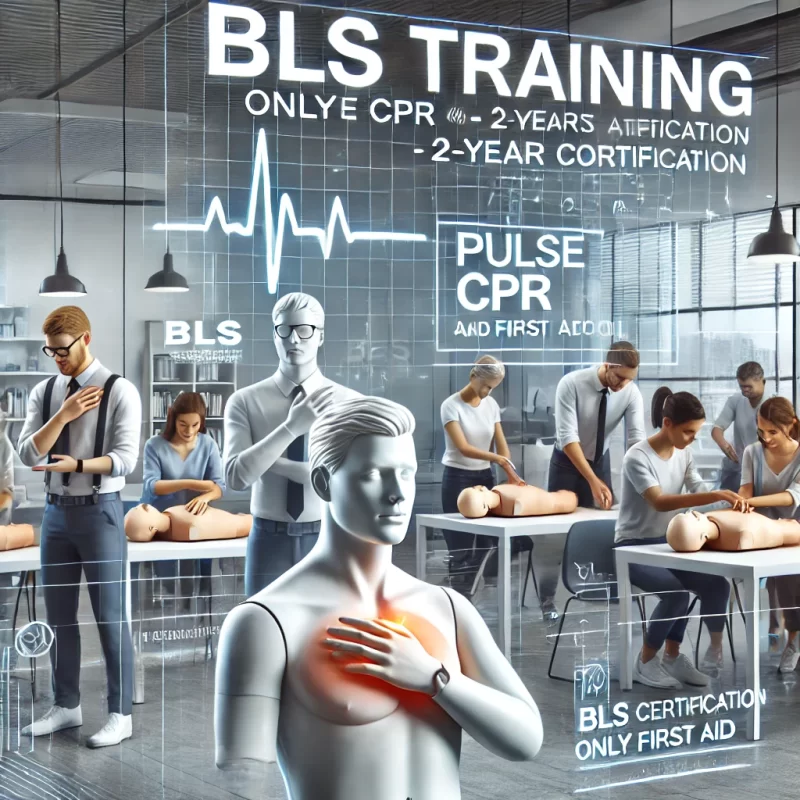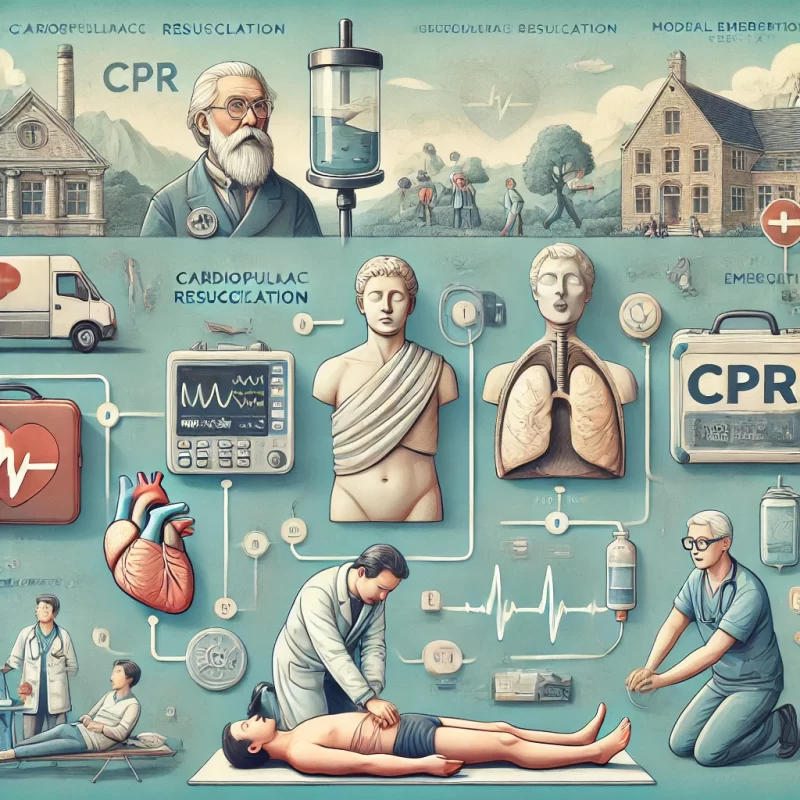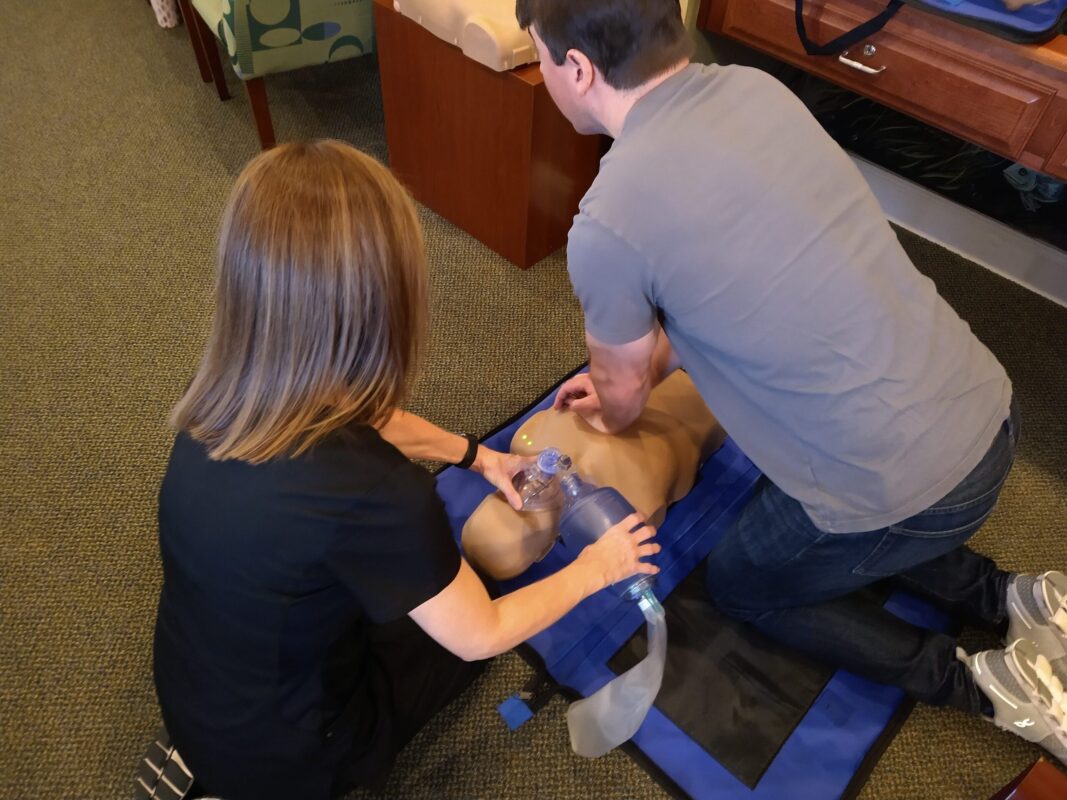
New CPR Guidelines.The latest American Heart Association guidelines, published today in Circulation: Journal of the American Heart Association, highlight how quick action, proper training, use of technology and coordinated efforts can increase survival from cardiac arrest. A leading cause of death in the United States, cardiac arrest is caused when the heart suddenly stops, usually due to an electrical malfunction in the heart that causes an irregular heartbeat and disrupts blood flow through the body. Survival depends on immediate CPR and other actions starting with bystanders.
More than 326,000 people experience cardiac arrest outside of a hospital each year and about 90 percent of them die, often because bystanders don’t know how to start CPR or are afraid they’ll do something wrong. The guidelines say high-quality CPR training for both bystanders and healthcare providers will help them feel more confident to act and provide better CPR to cardiac arrest victims. This guidelines update, which is intended to evolve CPR training, also recommends that all bystanders should act quickly and use mobile phones to alert dispatchers, with the ultimate goal of having immediate CPR given to all victims of cardiac arrest.
“Everyone has a role to play in the chain of survival – from bystanders to dispatchers, emergency responders to healthcare providers,” said Dr. Mark A. Creager, president of the American Heart Association and professor of medicine at Geisel School of Medicine at Dartmouth and director of the Heart and Vascular Center at the Dartmouth-Hitchcock Medical Center in Lebanon, NH. “When everyone knows their role, knows CPR and works together, we can dramatically improve cardiac arrest victims’ chances of survival.”
The AHA guidelines, which are based off the latest resuscitation research, have been published since 1966 to provide science-based recommendations for treating cardiovascular emergencies – particularly cardiac arrest in adults, children, infants and newborns. This update confirms known CPR recommendations with several quality enhancements to help save even more lives, including a range for the rate and depth of chest compressions during CPR. The last update to the guidelines was in 2010.
Key points from the Guidelines Update provides bystanders, dispatchers and communities with practical guidance to improve the effectiveness of their teamwork:
- Untrained bystanders should still call 911 and provide Hands-Only CPR, or CPR without breaths, pushing hard and fast in the center of the chest to the rate of 100-120 compressions per minute. However, if the bystander is trained in CPR and can perform breaths, he or she should add breaths in a 30:2 compressions-to-breaths ratio.
- Bystanders should use mobile phones to immediately call 911, placing the phones on speaker, so the dispatcher can help bystanders check for breathing, get the precise location and provide instructions for performing CPR.
- Dispatchers should be trained to help bystanders check for breathing and recognize cardiac arrest. Dispatchers should also be aware that brief generalized seizures may be an early sign of cardiac arrest.
- Mobile dispatch systems that notify potential rescuers of a nearby presumed cardiac arrest can improve the rate of bystander CPR and shorten the time to first chest compressions.Communities may want to consider this service to improve the chain of survival.
Improving Healthcare’s Systems of Care
Inside hospitals, CPR training is foundational to the lifesaving care healthcare systems provide, considering about 200,000 cardiac arrests occur in hospitals annually. Yet, research shows resuscitation skills can decline within a few months – far before the two-year current evaluation standard. Frequent training ensures hospitals are continuously evaluating how to deliver patients the highest quality of emergency cardiovascular care.
“The update calls for integrated systems of care that participate in continuous quality improvement and that provide a common framework for both community and healthcare-based resuscitation systems,” said Clifton Callaway, M.D., Ph.D., chair of the AHA’s Emergency Cardiovascular Care committee and professor of emergency medicine at the University of Pittsburgh. “We must create a culture of action that benefits the entire community in which it operates, inside and outside the hospital setting.”
In addition to a strengthened systems of care, the guidelines recommendations for healthcare professionals are:
- Upper limits of recommended heart rate and compression depth have been added, based on new data suggesting that excessive compression rate and depth are less effective. Rescuers should perform chest compressions at a rate of 100 to 120 per minute and to a depth of at least 2 inches, avoiding excessive depths greater than 2.4 inches.
- Targeted temperature management helps prevent brain degradation during post-cardiac arrest care. New evidence shows a wider range of temperatures are acceptable. Providers should select a temperature between 32-36 degrees Celsius and maintain it for at least 24 hours.
- Healthcare providers are encouraged to simultaneously perform steps, like checking for breathing and pulse, in an effort to reduce the time to first chest compression.
- There is insufficient evidence to routinely intubate newborns with poor breathing and muscle tone who have been born with meconium, infants’ first feces, in their amniotic fluid.Instead, the new recommendation is to begin CPR under a radiant warmer to get oxygen to the infant faster.
For almost 50 years, the American Heart Association’s CPR and ECC guidelines have been used to train millions in CPR, first aid and advanced cardiovascular care around the world. These guidelines are based on an international evaluation process that involved hundreds of resuscitation scientists and experts worldwide who evaluated thousands of peer-reviewed publications.
This year’s update provides recommendations on the data where new evidence requires a systematic review, in part, due to a network of trainers who regularly implement the CPR and ECC guidelines and rely on the science to inform the most effective care. To further make the guidelines practical and adaptable to many audiences, the AHA is providing this year’s update in three forms: the full Guidelines Update, a Guidelines Highlights document summarizing key points, and a mobile-friendly, searchable website compendium of all the association’s scientific findings. Learn more at ECCguidelines.heart.org.
Additional resources are available on the right column of this release.
###
About the American Heart Association
The American Heart Association is devoted to saving people from cardiovascular disease and stroke – America’s leading killers. We team with millions of volunteers to fund innovative research, fight for stronger public health policies, and provide lifesaving tools and information to prevent and treat these diseases. The Dallas-based association is the nation’s oldest and largest voluntary organization dedicated to fighting heart disease and stroke. A leader in resuscitation science, the organization trains over 17 million people per year in CPR, first aid and advanced cardiovascular care around the world through programs and awareness campaigns. To learn more or join us, call 1-800-AHA-USA1 or any of our offices around the country, or visit heart.org.



